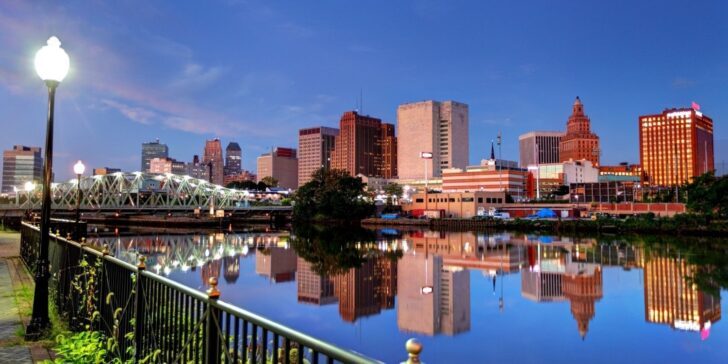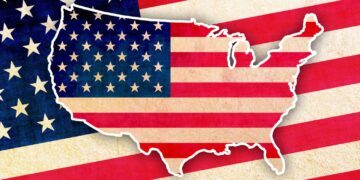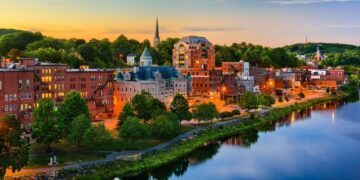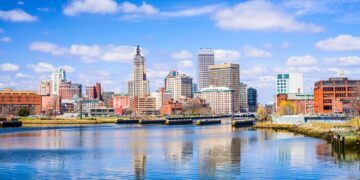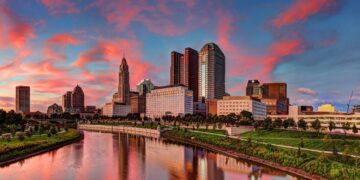Most commonly nicknamed “The Garden State,” New Jersey was the 3rd state to join the United States of America on December 18, 1787.
It has a population of 8,882,190 people (as of 2019), making it the 11th most populous state. New Jersey is bordered by the states of Pennsylvania, Delaware, and New York.
With 8,722 square miles (22,591 square kilometers) of land and water, it is the 47th largest state.
The capital of New Jersey is Trenton, situated centrally in the state.
That’s enough fast facts about the Garden State for now; we’re here to learn some of the more interesting facts!
People have been living in New Jersey since 13,000 BC.
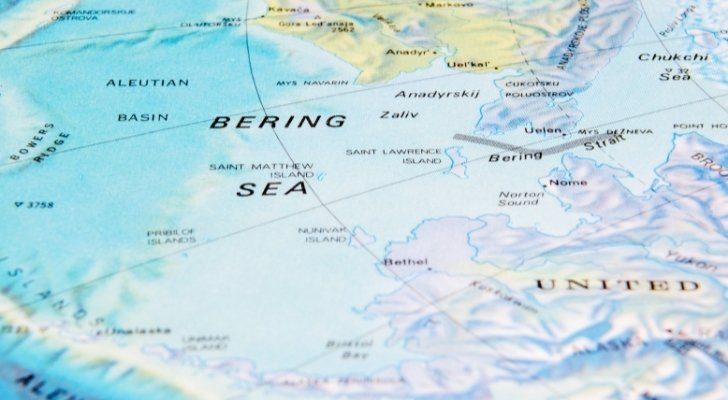
Modern theorists agree that most of the Americas were settled by a group of people referred to as the Paleo-Indians.
These early settlers made their way into the Americas from the far east of modern-day Russia, where they crossed the Bering Strait into modern-day Alaska between 15,000 and 10,000 BC.
They slowly spread further and further south and settled in North and South America from this point.
The region now known as New Jersey was underneath a great sheet of ice until around 13,000 BC, and it was after this ice sheet receded, that the Paleo-Indians moved into the region.
Here they first lived as hunter-gatherers, moving whenever food sources became scarce.
The Lenape had lived in New Jersey for more than 500 years when Europeans arrived.
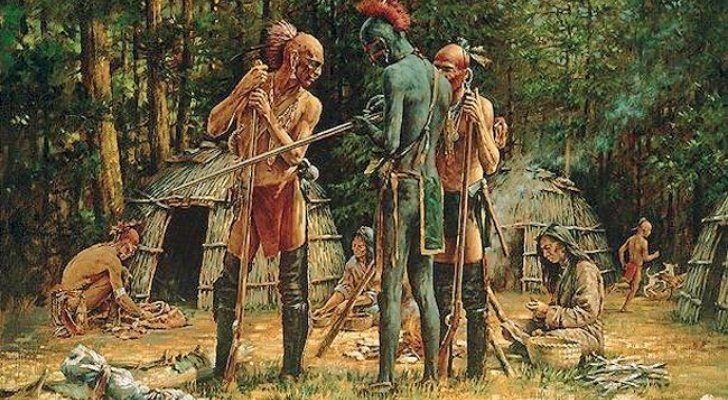
Several different cultures rose and fell when Europeans first arrived in the region now known as New Jersey.
The Lenape (sometimes referred to as the Delaware) had lived within the area since 1000 AD.
By the time the first European ships arrived in 1524, at least 20,000 people were a part of this large and complex society,
The Lenape lived in small tribes, both living off farmed produce, animals, and plants that they hunted and gathered.
Although they weren’t a centrally organized group of people, they were highly respected by neighboring tribes for their peaceful nature.
The first Europeans to colonize New Jersey were actually Dutch.
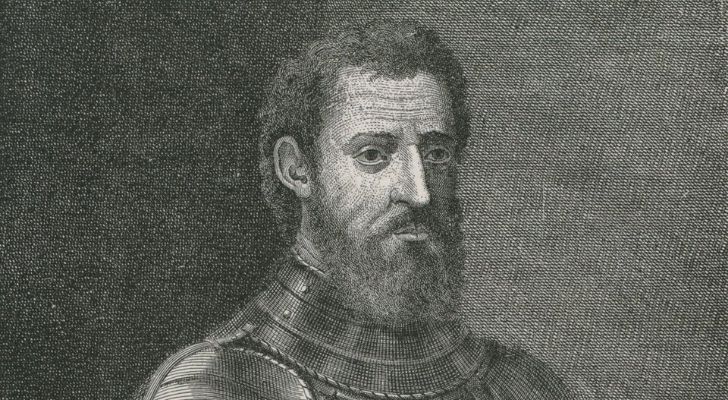
The first European to sail into the region in 1524 was Giovanni da Verrazzano, an explorer from Florence who had set sail in service of France.
It took a while for word to get back to Europe, as the next Europeans to reach the Jersey Shore were Dutchmen who arrived in 1611.
These Dutch explorers promptly surveyed the region and claimed it for their country, naming it New Netherlands.
Within a few years, many Dutch families had already spread throughout the region with the intent to settle there.
Even Sweden tried to claim parts of New Jersey as their own.
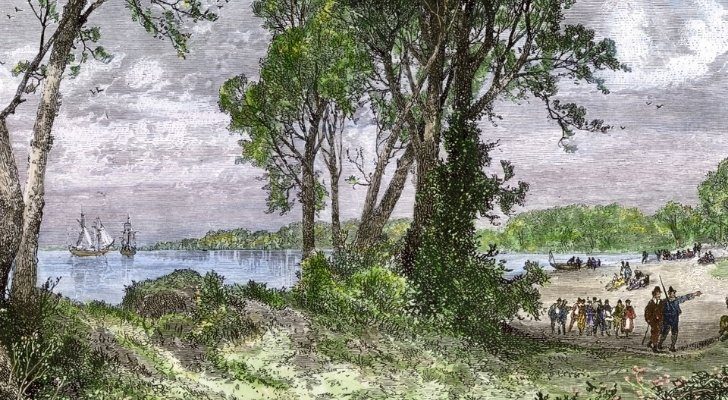
Sweden staked out their claim on the region less than 30 years after the Dutch.
They established New Sweden along the banks of the Delaware River in 1638.
The residents of New Sweden were relatively peaceful towards both their Dutch and Native American neighbors, focusing primarily on establishing a colony and increasing their trading capabilities.
New Sweden reached its peak sometime around 1654, with a total population of about 370 people.
Although the Swedish colony was later captured by the Dutch due to conflicts back in Europe, the Swedish residents were allowed to continue to live in the region.
New Jersey’s early days as an English colony were very complicated.
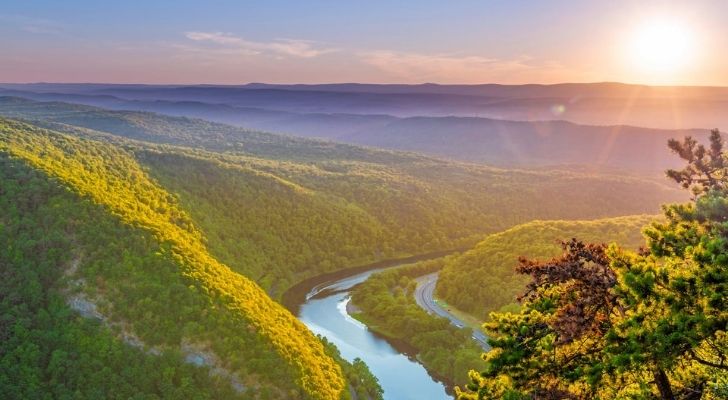
Although the Dutch had laid claim to the region and settled it, England claimed that it was previously theirs due to a technicality.
The English sailed in and took modern-day New Jersey and New York by force in 1664, renaming the New Netherlands capital of New Amsterdam to New York.
Later that same year, the region encompassing New Jersey was gifted to two English noblemen, Sir George Carteret and Lord Berkeley of Stratton.
Under their ownership, the Province of New Jersey was founded.
It was named after the small British island of Jersey.
Just ten years after the province was founded, it was split into East and West Jersey due to conflicts of interest between the various noblemen in charge and difficulties in controlling the new settlers.
It wasn’t until 1702 that the two were reunited, this time reforming as a royal colony that England more directly governed.
More battles were fought in New Jersey during the American Revolution than in any other colony.
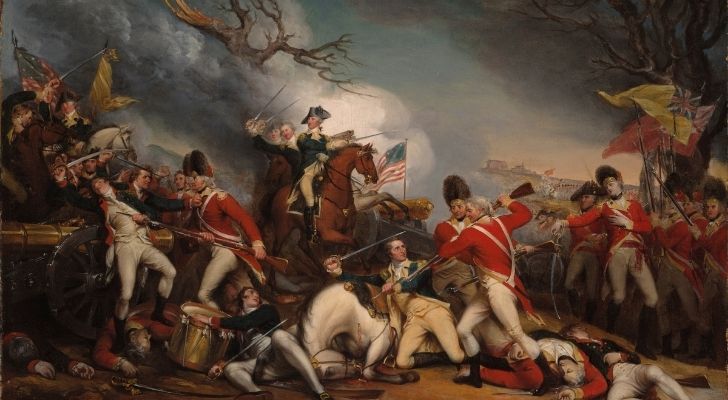
Overall, New Jersey was quite divided during the American Revolution.
While many were quite fed up with their royal overlords, many still felt tied to the crown.
In addition to this, many enslaved people in New Jersey fought for the side of the crown in return for their freedom.
Despite this, five representatives of New Jersey were quick to step up and sign the declaration of independence on July 4, 1776.
New Jersey gained the nickname “Crossroads of the Revolution” during the war due to the sheer number of battles fought between American and British forces within its boundaries.
Including minor clashes, there were 296 engagements between the two sides.
Many of Thomas Edison’s greatest inventions were engineered in New Jersey.
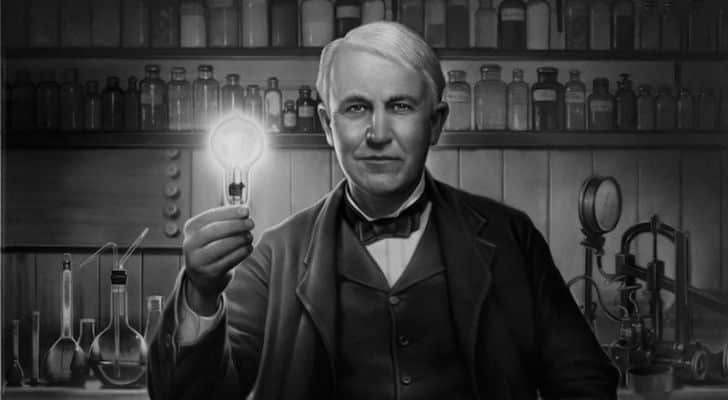
Thomas Edison was born on February 11, 1847, in the small town of Milan, Ohio.
While he may have started experimenting in his parent’s basement in Ohio, it wasn’t until he moved to New Jersey that his experiments and inventions started gaining the recognition they deserved.
By the age of 24, he built the world’s first research and development facility at Menlo Park.
It was here that Edison created the world’s first fully functional light bulb.
He also invented the phonograph and 400 other more or less famous yet vitally important inventions.
The largest light bulb in the world is in New Jersey.
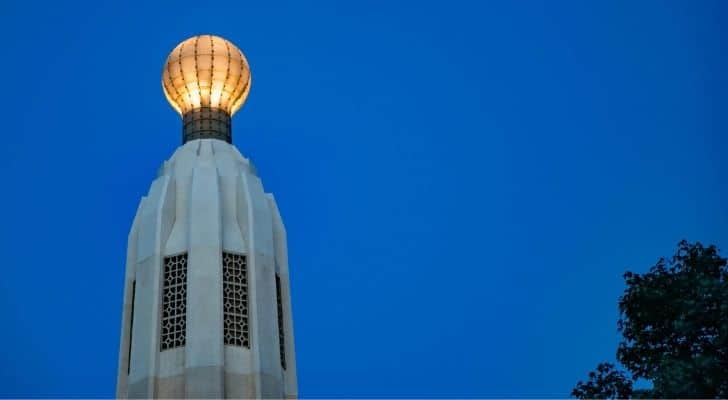
Seven years after Thomas Edison died, a monument was constructed to honor one of his most illuminating inventions – the light bulb.
The monument was built in 1938 in Menlo Park, where his research and development facility once stood.
The world’s largest light bulb rests at the top of the monument, a monolithic light source that measures an incredible 13 feet (3.96 m) tall.
The world’s last passenger airship exploded in New Jersey.
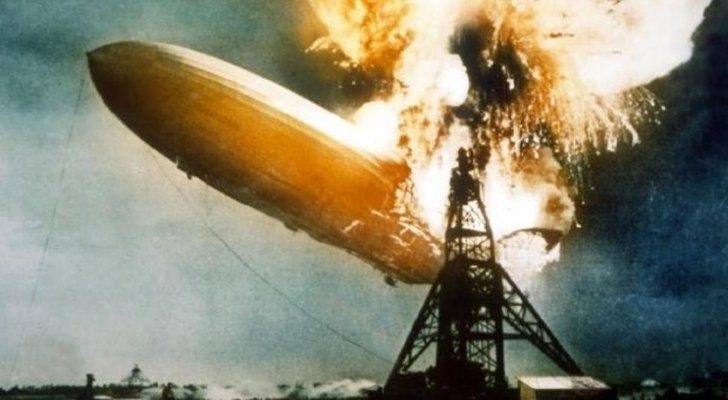
We are, of course, talking about the LZ 129 Hindenburg airship, commonly known simply as the Hindenburg.
The airship was originally designed to use helium, a non-flammable gas, to lift the rigid airship into the air.
Unfortunately, helium was extremely expensive and highly controlled, and as such, the airship was fatally redesigned to use flammable hydrogen gas instead.
Despite the use of highly explosive gas, the Hindenburg flew several successful trips from March 1936 until May the next year.
On May 6, 1937, disaster struck while the Hindenburg attempted to dock at the Lakehurst Naval Air Station in New Jersey.
To this day, we still don’t know exactly how it happened, but the airship exploded in mid-air.
13 passengers and 22 crew members were killed in the accident, and one of the docking staff.
A dinosaur skeleton found in New Jersey was the first to be displayed publicly.
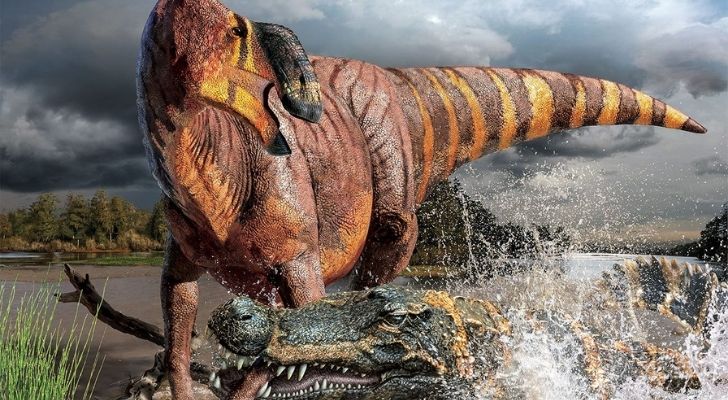
In 1858, archaeologist William Parker Foulke made history when he unearthed a dinosaur skeleton in Haddonfield, New Jersey.
This skeleton which would later be classified as a Hadrosaurus foulkii was the first almost-complete dinosaur skeleton to be unearthed in North America.
The skeleton was some of the first irrefutable proof that dinosaurs existed.
Ten years later, the skeleton made history again when it became the first dinosaur skeleton displayed publicly.
The Hadrosaurus foulkii has since been declared the official state dinosaur of New Jersey.
New Jersey hosted the first Miss America pageant in 1921.
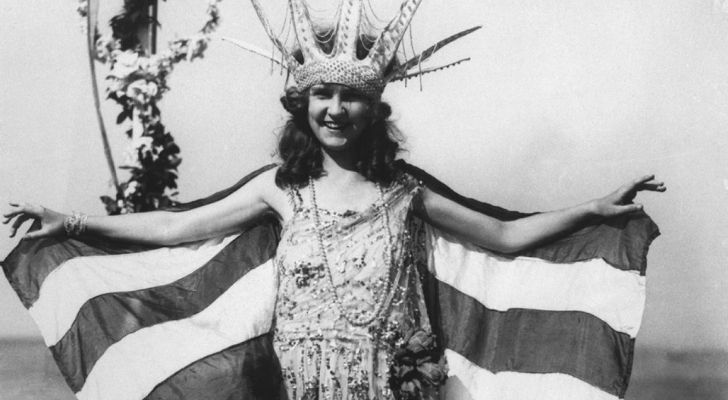
The Miss America pageant was originally created by local businesses to boost tourism to Atlantic City, with the first competition held on September 7, 1921.
While more than 100,000 people flocked to the event, only six competitors competed for both the title and a $100 cash prize.
A 16-year-old high school student, Margaret Gorman, won the competition and was crowned the “Golden Mermaid.”
The competition was later re-branded as the Miss America pageant in 1941.
New Jersey’s nickname was founded on a lie.
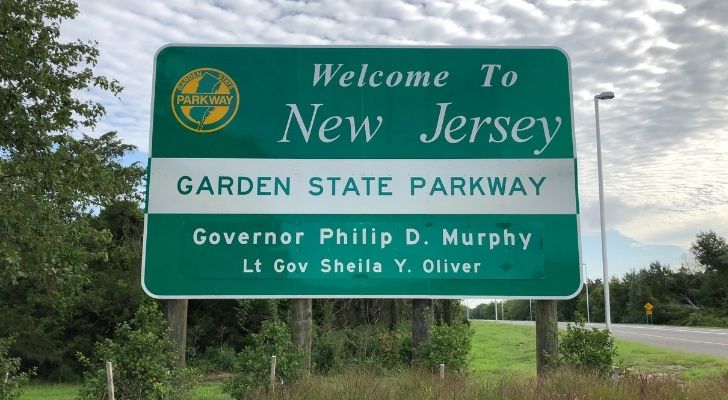
It has long been claimed that New Jersey’s nickname “The Garden State” was coined by the then-Attorney General Abraham Browning at the 1876 World’s Fair, held in Philadelphia.
Although Browning is credited with creating the nickname, it didn’t come into circulation until much later, in 1926.
Historian Alfred Heston wrote about it in his book about New Jersey.
It turns out that Heston fabricated the nickname and claimed that Browning was behind it to add credibility to the story, which has since been proved through archived records of Browning’s speech at the World’s Fair.
New Jersey is home to the oldest operating lighthouse in America.
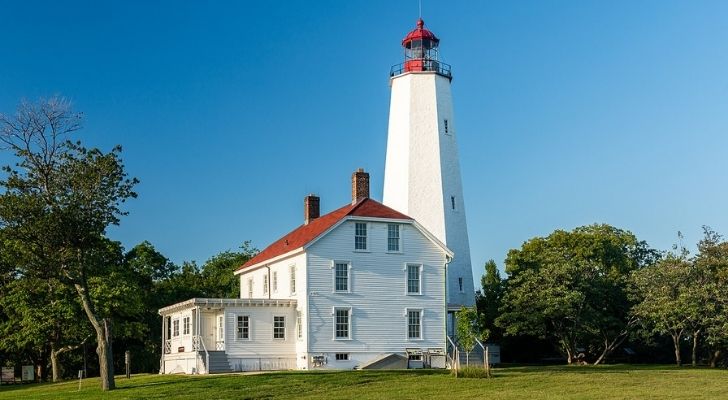
Tucked away in the Sandy Hook Unit of Gateway National Recreation Area in New Jersey lies a monument older than the United States.
The Sandy Hook Lighthouse was built all the way back in the 18th century and has been operating continuously since 1764.
The only times when the lighthouse hasn’t lit up the night sky were during various wars, including the Civil War, and World War I & II.
New Jersey is more densely populated than any other US state.
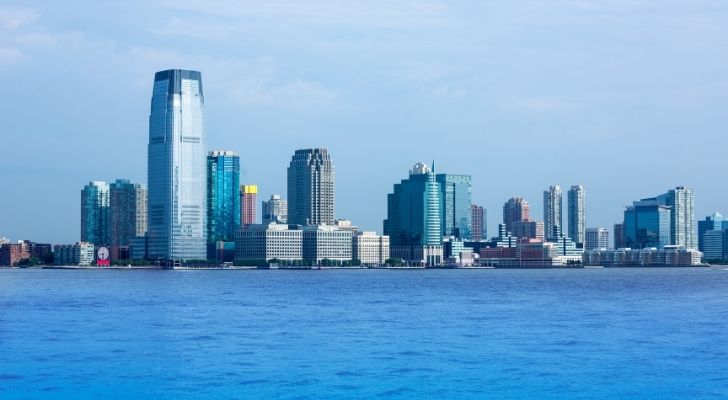
Although this is one of the more commonly known facts about New Jersey, the details make it more interesting.
What’s most surprising about this fact is that while the state itself is so densely populated on average, some areas, such as the majority of the southwest, are relatively empty of people.
The state’s population density is so high because of the Hudson County, which has the top four most populated municipalities in the entire country.
Each has at least 43,000 people per square mile (26,875 per square kilometer).
New Jersey sees more car theft than other US states!

New Jersey has long had a reputation as the car theft capital of America.
While this isn’t the case all over the state, some cities such as Newark simply just make the state look bad.
Someone’s even crunched the numbers and discovered which cars are stolen more often.
So, if you live in Newark or New Jersey, you may want to avoid owning a Toyota Camry, Honda Civic or Accord, or a Nissan Altima.
New Jersey’s long rivalry with New York has really done little for the state.
It led them to gain less than friendly nicknames such as “The Armpit of America.”
Sure, TV shows like The Jersey Shore have done little for the state’s reputation, but it’s time we look past that.
In reality, New Jersey is an incredibly fascinating state with a deep history and rich culture.
So next time you’re in the area, drop by New Jersey and give it a chance!

